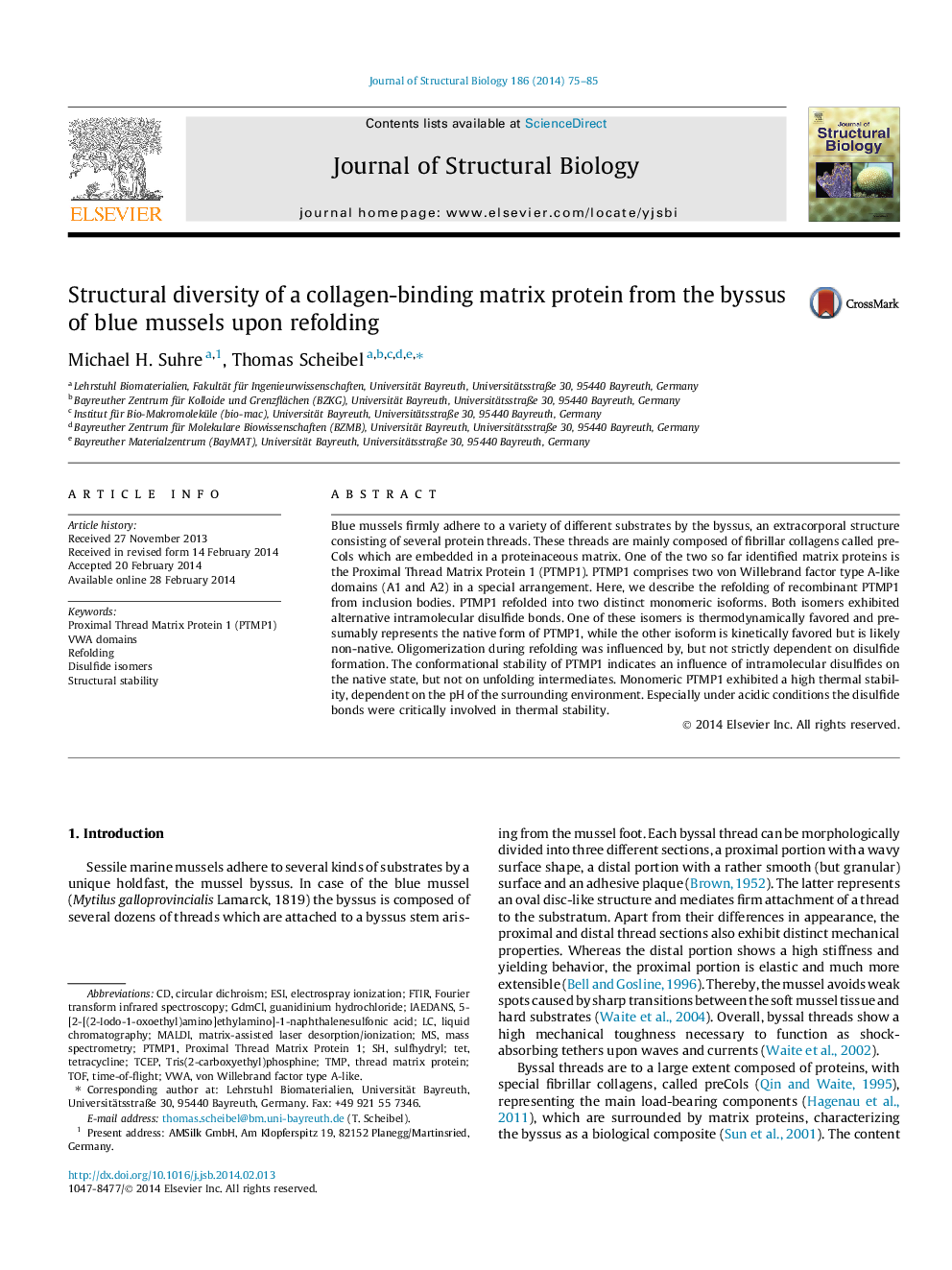| Article ID | Journal | Published Year | Pages | File Type |
|---|---|---|---|---|
| 5914244 | Journal of Structural Biology | 2014 | 11 Pages |
Abstract
Blue mussels firmly adhere to a variety of different substrates by the byssus, an extracorporal structure consisting of several protein threads. These threads are mainly composed of fibrillar collagens called preCols which are embedded in a proteinaceous matrix. One of the two so far identified matrix proteins is the Proximal Thread Matrix Protein 1 (PTMP1). PTMP1 comprises two von Willebrand factor type A-like domains (A1 and A2) in a special arrangement. Here, we describe the refolding of recombinant PTMP1 from inclusion bodies. PTMP1 refolded into two distinct monomeric isoforms. Both isomers exhibited alternative intramolecular disulfide bonds. One of these isomers is thermodynamically favored and presumably represents the native form of PTMP1, while the other isoform is kinetically favored but is likely non-native. Oligomerization during refolding was influenced by, but not strictly dependent on disulfide formation. The conformational stability of PTMP1 indicates an influence of intramolecular disulfides on the native state, but not on unfolding intermediates. Monomeric PTMP1 exhibited a high thermal stability, dependent on the pH of the surrounding environment. Especially under acidic conditions the disulfide bonds were critically involved in thermal stability.
Keywords
ESIGdmClVWATMPTETTOFtris(2-carboxyethyl)phosphineRefoldingTetracyclineStructural stabilitymatrix-assisted laser desorption/ionizationcircular dichroismTime-of-Flight TCEPsulfhydrylFTIRMass spectrometryFourier transform infrared spectroscopyMALDIGuanidinium hydrochlorideliquid chromatographyIAEDANSelectrospray ionization
Related Topics
Life Sciences
Biochemistry, Genetics and Molecular Biology
Molecular Biology
Authors
Michael H. Suhre, Thomas Scheibel,
